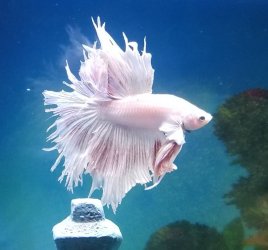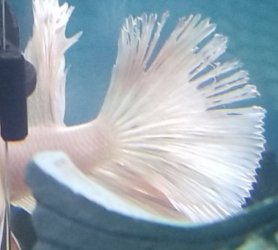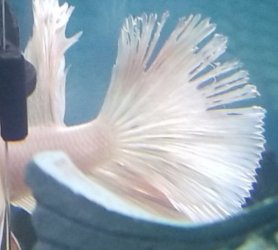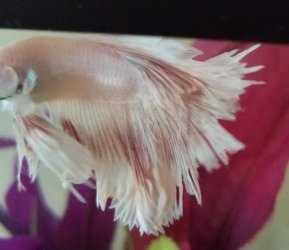Lan Laoshi
New Member
- Joined
- Aug 22, 2018
- Messages
- 5
- Reaction score
- 0
Hi everyone,
I need suggestions. I have a betta who I thought had fin rot. However, now I'm just not sure what is going on. I have treated him with maracyn 2, sulfaplex/furan 2, and kanaplex and followed the recommended dosing for all. Nothing has worked. I changed 25 percent of his water every other day when he was being treated in a 5 gallon quarantine tank that only had a bubble filter, a heater, and silk plants. His actual home is a 10 gallon tank that had been fishless-cycled before I got him and his in my tank mates are two Amano shrimp. So, I am at a loss for why or even how his fins are in this condition. His fins just keep getting worse. They've been continually deteriorating at various rates since I got him back in June.
Does anyone have any suggestions on where to go from here? Anyone else have incurable fin rot? I've already read so many forum posts on treatment, but nothing has worked for me yet.
The attached picture is very recent.
I need suggestions. I have a betta who I thought had fin rot. However, now I'm just not sure what is going on. I have treated him with maracyn 2, sulfaplex/furan 2, and kanaplex and followed the recommended dosing for all. Nothing has worked. I changed 25 percent of his water every other day when he was being treated in a 5 gallon quarantine tank that only had a bubble filter, a heater, and silk plants. His actual home is a 10 gallon tank that had been fishless-cycled before I got him and his in my tank mates are two Amano shrimp. So, I am at a loss for why or even how his fins are in this condition. His fins just keep getting worse. They've been continually deteriorating at various rates since I got him back in June.
Does anyone have any suggestions on where to go from here? Anyone else have incurable fin rot? I've already read so many forum posts on treatment, but nothing has worked for me yet.
The attached picture is very recent.







 I don't live anywhere near an aquatics vet or I'd at least see about getting a culture taken for a pathology report. I'm very curious as to what he actually has. I have to travel 45 minutes away just to take my rats to the vet. Our only local "exotics" is an avian specialist who's only in twice a week. Everyone else will only see cats and dogs.
I don't live anywhere near an aquatics vet or I'd at least see about getting a culture taken for a pathology report. I'm very curious as to what he actually has. I have to travel 45 minutes away just to take my rats to the vet. Our only local "exotics" is an avian specialist who's only in twice a week. Everyone else will only see cats and dogs.